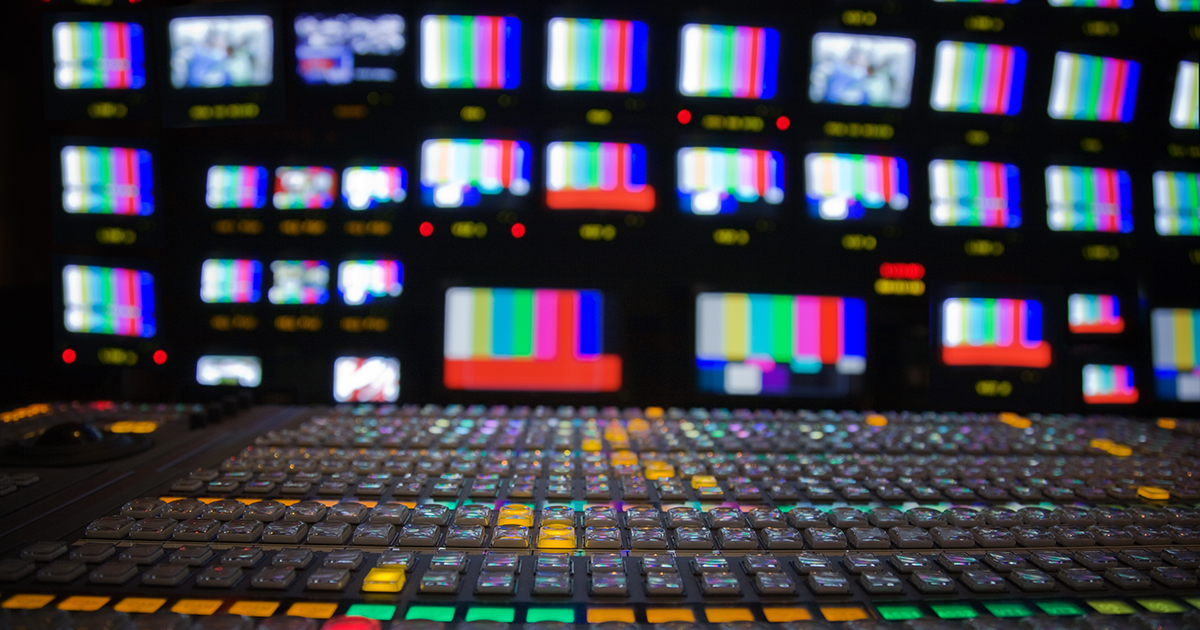
It’s been seven years since the launch of the first 4K channels, yet worldwide adoption among broadcasters remains sketchy. There’s also a considerable content gap between households that own a 4K TV set and the 4K programming available for them to view outside of subscription streaming services.
While more and more broadcast services will upgrade from HD to UHD over time, progress seems to be slowing.
It’s getting to the point where consumers won’t be able to buy anything other than a 4K UHD TV. According to Statista, HD displays have been steadily losing global market share to UHD TVs since 2017. While high-resolution TV sets (4K or higher) held a 45.5% market share in 2018, they accounted for over half of all TV sales worldwide in 2019. Another recent study by Gfk found UHD sets accounted for 75% of the overall TV market in Germany.
READ MORE: Global TV market share by resolution 2017-2019 (Statista)
“Broadcasters who do not want to lose viewers and protect their retention rate should seriously consider adopting UHD sooner rather than later,” urges Eutelsat. “This will help them avoid becoming irrelevant in much the same way as the switch from SD to HD.”
The satellite operator wants to make the case that UHD has business benefits for broadcasters now, outlining its arguments in a recent blog post.
Despite the fact that almost half of all TV sets in Europe and more than 50% in the US are currently UHD compatible, most channels are still broadcast in SD and HD formats.
Eutelsat believes this points to “a clear reluctance on behalf of most broadcasters who see the investment to be too costly.”
It counters that viewers will naturally gravitate towards better quality and will avoid other channels that cannot match this.
“UHD viewing as the standard is simply a matter of time. Since most broadcasters are avoiding UHD, becoming an early adopter is an excellent opportunity for broadcasters seeking a key differentiator for their channels. This will make them more appealing to viewers and advertisers alike.”
“Broadcasters who do not want to lose viewers and protect their retention rate should seriously consider adopting UHD sooner rather than later. This will help them avoid becoming irrelevant in much the same way as the switch from SD to HD.”
— Eutelsat
SVODs like Netflix have mandated 4K as a deliverable for years creating a differentiating factor of quality against competing linear channels. Eutelsat urges broadcasters to take heed.
“The power of exclusivity cannot be underestimated. It attracts more viewers to platforms. The opportunity could exist for UHD-capable broadcasters, to gain exclusive UHD content in the future for creators who do not want to compromise.”
The company also believes UHD is good for the advertising proposition of commercial broadcasters. Advertisers in North America are already advertising on HD channels more than SD, it states. The same is expected to happen with UHD.
Eutelsat says its research has shown that early adoption of HD in developing markets has directly led to an increase in revenue for broadcasters who invest in them. In fact, better quality has been associated with an 18% higher retention rate, with higher quality channel advertising also outperforming the same adverts on lower-quality channels.
“As UHD broadcasting continues to gain momentum, broadcasters must seize the opportunities that lie before them. Only UHD can offer the quality, potential, and viewer satisfaction required to stay relevant in the market and grow.”
What Eutelsat does not address here is the shift away from satellite (and cable) toward primary transmission over IP by traditional satellite-based broadcasters. Comcast-owned Sky in Europe already has numerous 4K UHD channels but is weaning its program distribution infrastructure to streaming. Elsewhere in Europe, cash-strapped public broadcasters have broadcast occasional events (like soccer World Cups) in 4K but done so over streaming platforms (like BBC iPlayer).
In short, the cost benefits of leasing a satellite transponder for 24/7 channels or even ad hoc events may not be as compelling as using IP (and its attendant interactivity) to deliver a full 4K HDR proposition for many broadcasters.

